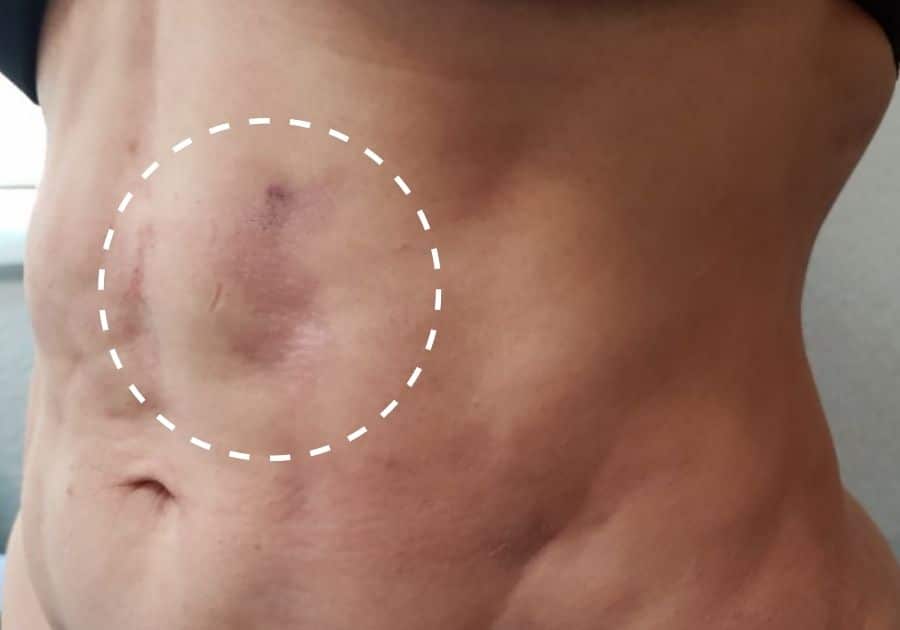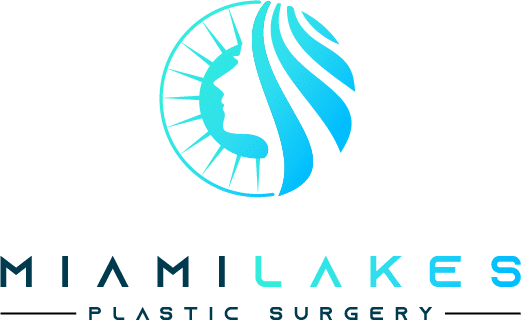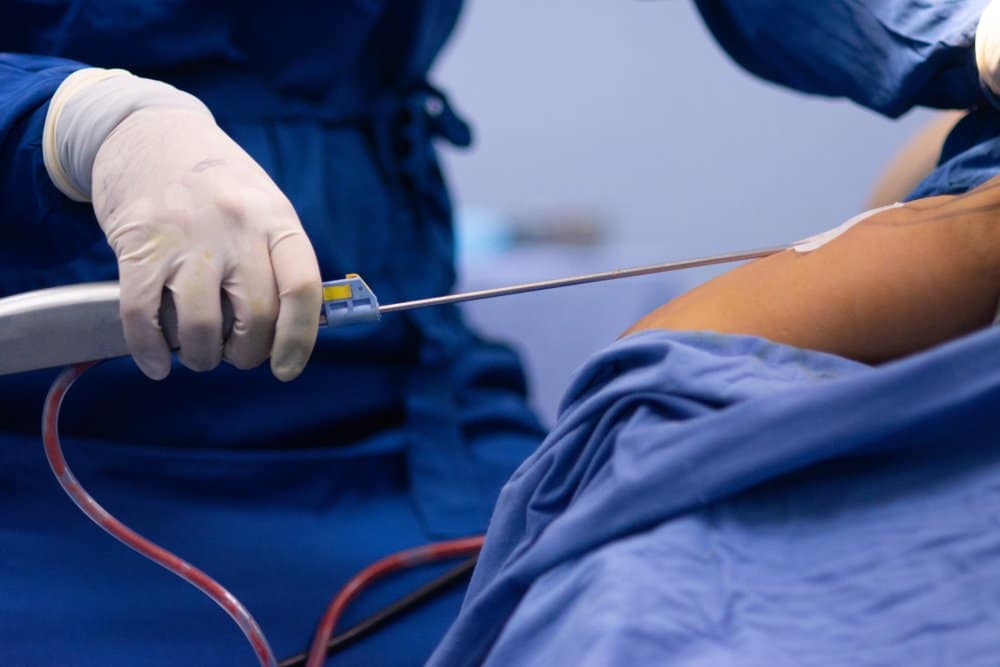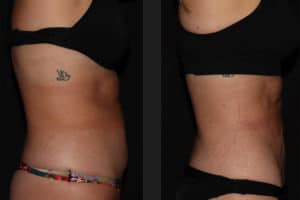Fibrosis is one of the most commonly experienced secondary effects of many types of surgery. Sometimes a patient notices it several weeks after their procedure, or more quickly during the post-op period. If this happens to you, you may first notice it as lumps on scar tissue. After that, you may find that the area becomes hard and thick, which may be accompanied by pain.
If you want to lower the risk of developing fibrosis after your lipo procedure, you should begin with manual lymphatic drainage after your procedure.
What is fibrosis?

In the aftermath of any type of surgery, a patient’s skin can began accumulating adhesions and scars due to the healing process.
Fibrosis is an abnormal type of healing involving the overproduction of something called fibroblasts, which are connective tissue cells found throughout the body.
This type of scarring results in bands of tough tissue connecting surrounding tissue and leading to skin hardness under the surface of the skin.
Any type of wound will heal in a series of stages. The healing process actually begins the very moment that your surgeon creates an incision.
The first stage of the process involves inflammation and coagulation, which can last for minutes or days. The next stage involves skin cell proliferation and remodeling, which may last days, weeks, or longer.
There are different types of cells that are involved in the development of fibrosis, but it is the fibroblast type that we are talking about following collagen development and wound remodeling. Fibroblasts have a critical role in the creation and remodeling of damaged tissue.
Unfortunately, this sometimes leads to an accumulation of excess fibrous tissue that can cause pain or harm the functioning of your body.
Basically, fibrosis is a process involving a range of skin imperfections that are observable following a lipo procedure.
Patients typically describe fibrosis as hard lumps under the skin that are painful in the area where the liposuction was performed. Fibrosis can also have the appearance of large pores, uneven areas and tissue discoloration.
Who is at risk of developing fibrosis after lipo?
Your risk of developing fibrosis after lipo may increase, depending upon factors like:
- Scar size: Large scars lead to an increased risk of developing fibrous tissue.
- Genetics: Some people are more susceptible to developing fibrosis, even when their incisions are small. They may also develop keloid scars.
- Lack of activity: If you sit for a long time, your risk of developing fibrosis goes up. Keep in mind that you should be moving around every hour or so for five minutes following your procedure. Increase your exercise intensity once you begin feeling better.
What are some fibrosis symptoms?
If you experience fibrosis after your lipo procedure, you may notice:
- Uneven skin
- Localized pain near the incision
- Loss of light touch sensation or numbness
- Hard and thickened skin within your scar tissue
- Tugging sensation when attempting to stretch or move
What causes fibrosis after lipo?
The liposuction procedure is actually considered to be quite safe, but sometimes problems can develop. Even though lipo is minimally invasive, it is common to experience some degree of swelling, which may further lead to inflammation.
The procedure involves the insertion of a small tube called a cannula under the skin for removing fat deposits. The insertion of the cannula can sometimes damage lymphatic and blood vessels, soft tissues, and lead to scarring under the skin.
During the suctioning of fat, tissue become separated and this can lead to a high level of swelling. Fluid pockets can also develop after the procedure. If swelling is not kept at a minimum level after a lipo procedure – sometimes due to the patient not following post-up instructions – chronic swelling can develop that leads to chronic inflammation and the development of fibrotic scar tissue.
What does fibrosis after lipo look like?
If you develop fibrosis following a liposuction procedure, it may appear as bumps, lumps and hard knots. This sometimes develops when the patient does not wear the recommended compression garments.
Another way that fibrosis can present itself is the appearance of contour irregularities or wavy dips. This is sometimes caused by problems with the fitting of compression garments or retracting scar tissue that pulls tissue inward.
How can fibrosis after lipo be treated?
One possible treatment for those dealing with fibrosis after lipo is known as Endermologie. This treatment is reported to help with all problems related to connective tissue disorders, and is helpful for preventing the appearance of scars, hard tissues, fibrosis, circulation problems and keloid scars.
Endermologie also helps in reducing the side effects of a lipo procedure and symptoms like sagging, pain, muscle tension, soreness and stiffness, and loss of joint mobility. The goal of the treatment is paving the way for a quick return to an active and normal life.
The treatment can help you recover more quickly through its fast relief of inflammation, as well as science-based lymphatic drainage and improved blood circulation. All of these improvements work together to reduce symptoms of water retention like swollen legs and arms.
Many people who experience fibrosis after lipo find that what works best for them is a combination of treatments. For example, they may undergo manual lymphatic drainage, myofascia and ultrasound therapy, as well as stretching exercises.
Lymphatic drainage is a very gentle form of massage involving extremely light pressure in combination with gentle pumping movements for the drainage of fluid accumulations from the affected area into the lymph nodes for drainage and elimination from the body.
How can I keep from developing fibrosis after my liposuction procedure?
The most important way that you can prevent fibrosis after a lipo procedure is to carefully follow the instructions of your plastic surgeon.
Although you can expect some swelling, you must manage it correctly so that it does not become excessive and lead to chronic inflammation and fibrotic scarring.
One critical factor in preventing fibrosis after lipo is to wear your compression garments correctly, as well as to ensure that they fit properly. This should minimize swelling and prevent a large fluid accumulation in the treatment area.
Research has found that undergoing a lymphatic drainage massage procedure after a liposuction can reduce swelling and enhance bodily contours, as well as greatly increase circulation within lymphatic vessels.
Many patients find that undergoing lymphatic massage after a lipo procedure helps with the reduction of bruising, as well as in softening scar tissue. Self-care techniques like dry brushing are also helpful.
The important takeaway is that prevention is key in preventing fibrosis. If you are going to undergo a lipo procedure, you will want to be sure to start massage as soon as possible. The reason why this is so important is that collagen is still flexible at this point. Think of collagen as wet cement immediately after your lipo procedure. You don’t want to wait until it dries and sets before you take action. Although massage can still be helpful for many months after a lipo patient has developed fibrosis, results are definitely improved when you act early.
Should I only do massage after I first notice symptoms of fibrosis?
No. This is a preventive measure. As mentioned earlier, fibrosis is a gradual condition that develops over time. Your tissues are at their most soft and malleable in the period following a liposuction procedure. So the earlier you act, the better. And, as always, follow the instructions of your plastic surgeon as to when to begin prevention techniques.
The goal of post-lipo aftercare is to be very gentle at first. As time passes, you can go progressively harder. The goal is in minimizing pain and reducing swelling so that excessive scar tissue and fibrosis is prevented.
Gentle lymphatic drainage massage techniques can be performed manually or using special drainage equipment in the first couple of weeks following lipo. In the second and third weeks post-up, a firmer massage may be used.
Weeks 3-8
The goal during this time period is to prevent adhesions, scar tissue, and fibrosis, while progressively breaking down some of these issues that will unavoidably occur.
During weeks three to eight, progressively stronger lymphatic massage may be performed. Some patients report getting good results from the so-called “fluffy” lymphatic drainage technique during the first three weeks post-lipo. They feel that this technique is helpful in minimizing water retention, and stronger massage techniques help to break down accumulations of scar tissue and hard lumps that can develop after a lipo procedure.
The technique also seems to help loosen skin that can become stuck on underlying soft tissues, helping with increasing range of motion.
Eight Weeks Post-Lipo
In about two months after your liposuction procedure, you can begin working on skin sagging, which is something to be expected to some degree. Cellulite can also be dealt with at this time.
The two-month post-op time frame is also when you can begin undergoing ultrasonic cavitation or strong radiofrequency treatment for the removal of cellulite and tightening of your skin. This can also help remove fibrotic tissue and lumps by increasing tissue metabolism.





